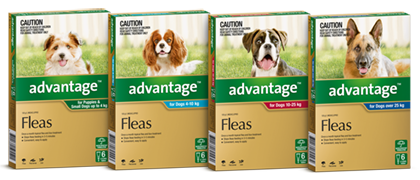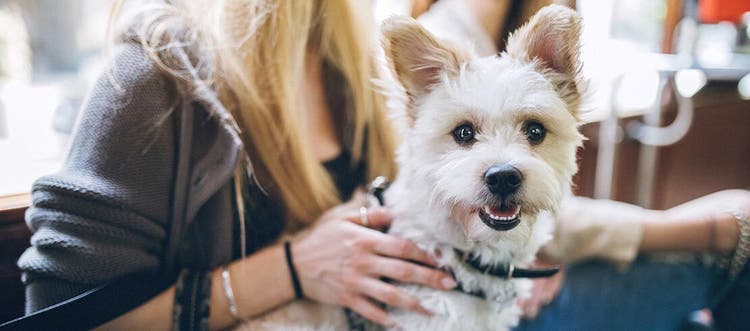Heat stroke is dangerous – and can even be deadly. Learn how to protect your dog or cat from overheating during the summer months.
Heat stroke is a life-threatening condition that occurs when your pet’s body temperature is extremely high, usually greater than 41°C. It can result in a body-wide inflammatory response and can lead to multiple organ failure.
Heat stroke in pets is most common in the summer when conditions are hot and humidity is high, but it can also occur during strenuous physical activity or exercise.
Signs of heat stroke in dogs and cats
Heat stroke can vary from mild to life threatening. A high body temperature damages cells and causes a systemic or whole body inflammatory response, damaging vital organs including the liver, kidneys and brain. Symptoms of heat stroke include:
- Rapid breathing or panting: although common in dogs, panting is rare and unusual in cats, but can occur with heat stroke
- Vomiting
- Diarrhoea
- Abnormal bleeding: red lesions on the skin caused by small broken blood vessels, blood in vomit, blood in faeces
- Increased heart rate
- Muscle tremors
- Disorientation and restlessness
- Seizures
- Collapse
Causes and factors of heat stroke in pets
Several situations and factors can put your pet at risk of heat stroke, including:
- Being confined in a car, even when the windows are open and the car is parked in the shade
- Being confined without access to shade or water
- Overexertion on a very hot and humid day ·
- Obesity
- Cardiac and/or respiratory disease
- Age – old and very young animals are most at risk
- Thick or heavy coats
- Short-faced (brachycephalic) breeds, such as bulldogs, pugs, and Boston terriers. Panting is one of the main ways dogs cool off, and these types of breeds have great difficulty panting effectively due to their short and narrow nasal passages and airways.
Treatment of heat stroke in dogs and cats
Seek veterinary attention immediately if you suspect heat stroke – early treatment improves the chance of survival.
To help treat your pet for symptoms of heat stroke on the way to the vet, follow the following steps:
1. Lower your dog’s or cat’s body temperature gradually.
2. Cool your pet with a wet towel or water, and then fan them to allow for evaporative cooling. Ensure the air conditioner in your car is on as you drive to the vet.
3. Don’t place any animal with possible heat stroke into an ice-cold bath. Rather than lowering body temperature, rapid cooling can minimise heat loss and worsen heat stroke.
Placing animals into an ice-cold bath can also cause hypothermia. Heat stroke compromises the body’s ability to regulate its temperature, so animals suffering heat stroke that are cooled to a hypothermic state may not be able to re-establish a normal temperature, which can be fatal.
How to prevent heat stroke in dogs and cats
To maintain a normal body temperature, pets lose heat through evaporative cooling, similar to how humans lose heat when we sweat. Dogs and cats can sweat through their paw pads, but as this is a small surface area, it is ineffective for heat loss, particularly in excessive heat. Other common ways pets lose heat to cool themselves off include:
- Salivation and panting - Dogs use this method of panting to lose heat. Taking fast, shallow breaths maximises airflow over the moist surfaces lining their nasal cavity and mouth. Heat is lost through evaporative cooling as the moisture leaves these surfaces and is exhaled.
- Licking - Cats also rely on evaporative cooling to lose heat, but instead of panting, they moisten their coat with saliva by licking themselves.
However, these mechanisms of losing heat become ineffective when environmental humidity exceeds 80%.
Take the following precautions to help prevent heat stroke in your pet:
- Avoid exercising at midday during hotter months and altogether in extreme temperatures
- Use pet sunscreen or protective clothing - don't use human sunscreen, as some of the ingredients can be toxic to pets.
- Ensure pets have access to shade, ventilation and fresh drinking water - for pets that often trip over their water bowl, choose one made of heavy material (e.g. ceramic) and provide covered shelter outside.
- Provide access to water for cooling off in the shade, like a dog wading pool, or a wet towel to lie on - always supervise animals in a wading pool.
Heat stroke isn’t the only danger pets can face during the summer months. Summer is the ideal time for fleas, ticks and other biting insects that transmit harmful diseases. Protect your pets from the pain and irritation of these parasites and their associated diseases with Elanco's range of protective products. Be sure to check out our top products such as CredelioTM PLUS for Dogs, the smallest chew1 for protection against fleas, ticks, worms and mites, and SerestoTM, our odourless, water-resistant* & easy to apply flea and tick collar for cats and dogs. Staying on top of these regular treatments can help keep your pets safe all summer long.
Always read and follow product label instructions.
* Refer to label for full details.
- On average for dogs between 3 - 45kg based upon size (i.e. volume) of tablet. Elanco Data on File. Study ELA210538 2021.

Advantage for cats & dogs
Advantage is a fast-acting flea treatment for cats, dogs, rabbits and ferrets









